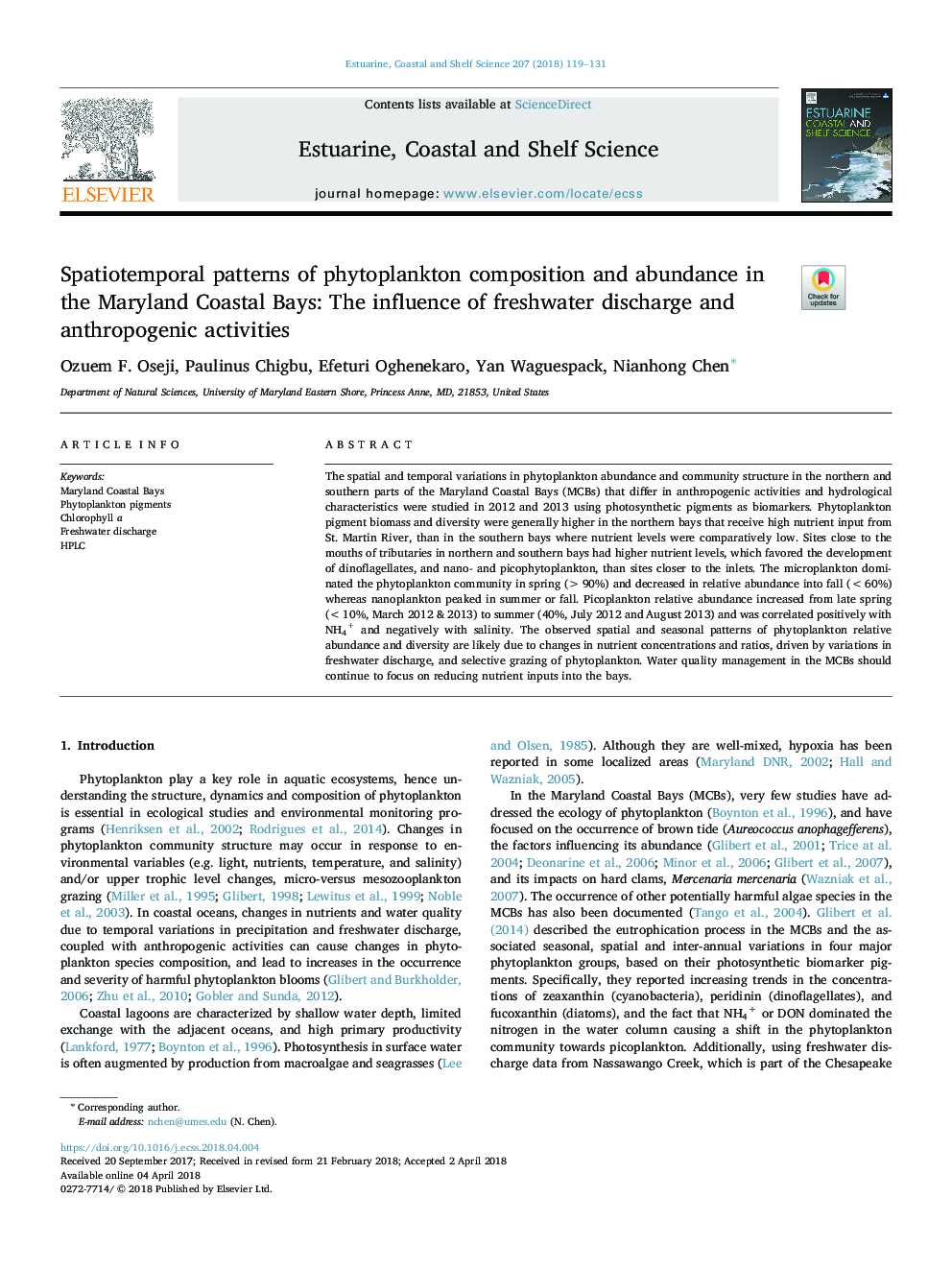| Article ID | Journal | Published Year | Pages | File Type |
|---|---|---|---|---|
| 8884774 | Estuarine, Coastal and Shelf Science | 2018 | 13 Pages |
Abstract
The spatial and temporal variations in phytoplankton abundance and community structure in the northern and southern parts of the Maryland Coastal Bays (MCBs) that differ in anthropogenic activities and hydrological characteristics were studied in 2012 and 2013 using photosynthetic pigments as biomarkers. Phytoplankton pigment biomass and diversity were generally higher in the northern bays that receive high nutrient input from St. Martin River, than in the southern bays where nutrient levels were comparatively low. Sites close to the mouths of tributaries in northern and southern bays had higher nutrient levels, which favored the development of dinoflagellates, and nano- and picophytoplankton, than sites closer to the inlets. The microplankton dominated the phytoplankton community in spring (>90%) and decreased in relative abundance into fall (<60%) whereas nanoplankton peaked in summer or fall. Picoplankton relative abundance increased from late spring (<10%, March 2012 & 2013) to summer (40%, July 2012 and August 2013) and was correlated positively with NH4+ and negatively with salinity. The observed spatial and seasonal patterns of phytoplankton relative abundance and diversity are likely due to changes in nutrient concentrations and ratios, driven by variations in freshwater discharge, and selective grazing of phytoplankton. Water quality management in the MCBs should continue to focus on reducing nutrient inputs into the bays.
Related Topics
Physical Sciences and Engineering
Earth and Planetary Sciences
Geology
Authors
Ozuem F. Oseji, Paulinus Chigbu, Efeturi Oghenekaro, Yan Waguespack, Nianhong Chen,
